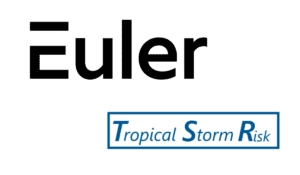What is bite size insurance?
What is bite size insurance?
What is Bite-sized/Sachet/Small-ticket Insurance? A Bite-sized Insurance Policy covers specific needs for a comparatively shorter duration. Such policies are available at a lower premium and can often be purchased from online insurers using a smartphone without the need for documentation or tests. Sep 1, 2021
What are the two types of insurance?
Different Types of Insurance Policies Available in India Health Insurance. Motor Insurance. Home Insurance. Fire Insurance. Travel Insurance.
Which is a type of insurance to avoid?
Avoid buying insurance that you don’t need. Chances are you need life, health, auto, disability, and, perhaps, long-term care insurance. But don’t buy into sales arguments that you need other more costly insurance that provides you with coverage only for a limited range of events.
What are the 7 main types of insurance?
7 Types of Insurance are; Life Insurance or Personal Insurance, Property Insurance, Marine Insurance, Fire Insurance, Liability Insurance, Guarantee Insurance.
Which is the best insurance policy?
Top 10 Life Insurance Policies in India Plan Name Plan Type Policy Term (Min/Max) SBI Life eShield Term 5 years to 30 years HDFC Life Click 2 Protect Plus Term 10 years to 40 years Aviva i-Life Term 10 years to 35 years Future Generali Care Plus Rural 5 Years to 30 Years 6 more rows
What are the four basic types of insurance?
Most experts agree that life, health, long-term disability, and auto insurance are the four types of insurance you must have. Always check with your employer first for available coverage.
What are the 5 main types of insurance?
Home or property insurance, life insurance, disability insurance, health insurance, and automobile insurance are five types that everyone should have.
What are the 5 parts of an insurance policy?
Every insurance policy has five parts: declarations, insuring agreements, definitions, exclusions and conditions.
What can be insured Lawphil?
Every corporation, partnership, or association, duly authorized to transact insurance business as elsewhere provided in this Code, may be an insurer. “”Section 7. Anyone except a public enemy may be insured. “”Section 8.
What will happen to a policy premium if the deductible is raised from $1000 to $2000?
Cost Difference While increasing your deductible may result in a lower premium, make sure you’re considering overall value. Jumping from a $1,000 deductible to a $2,000 deductible may save you only 6% or so, for example.
What is insurance class 11?
Insurance Insurance is a contract between the insurer and insured in which insurer agree to make good the loss of insured on happening of an event in consideration of a regular payment called premium. Apr 22, 2019
Which insurance is best for bike?
21+ Best Bike Insurance Companies in India for 2022: IRDAI Approved Bike Insurance Company Motor OD Claim Settlement Ratio FY20 Network Garages SBI General Insurance 89.51% 16,000+ Bajaj Allianz General Insurance 88.83% 4,000+ Future Generali India Insurance 88.69% 2,500+ Bharti AXA General Insurance 87.99% 5,200+ 20 more rows
What is IDV?
The IDV is one of the most critical aspects of a vehicle insurance policy. It is something that directly affects the premium you pay towards your vehicle insurance. To begin with, IDV (or insured declared value) is the monetary value of the vehicle fixed during the commencement of the insurance policy period.
Which is best LIC policy?
Best LIC Plans List for 2022 LIC Policies Plan Type Policy Term LIC Jeevan Umang Whole Life Insurance 100 years minus(-) the age at entry LIC Jeevan Amar Term Assurance Plan 10 years-40 years LIC Money Back 25 years Money Back Policy 25 years LIC New Jeevan Anand Endowment Plan 15 years-35 years 1 more row
What are the basics of insurance?
The basic concept of insurance is that one party, the insurer, will guarantee payment for an uncertain future event. Meanwhile, another party, the insured or the policyholder, pays a smaller premium to the insurer in exchange for that protection on that uncertain future occurrence.


